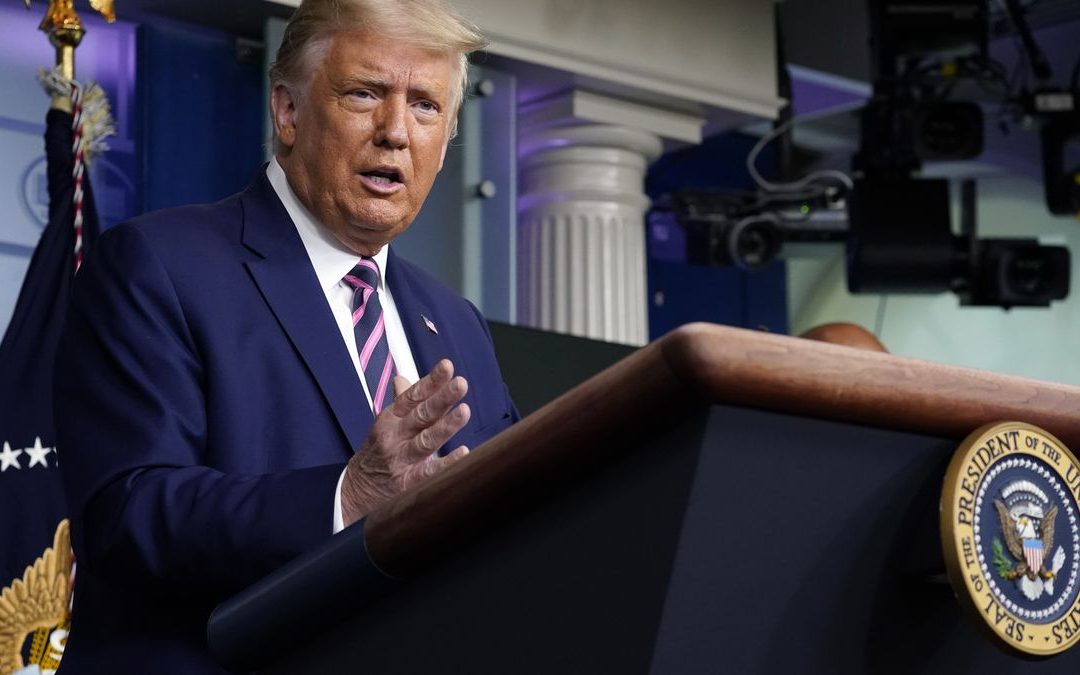
Donald Trump’s Language Use on Twitter: What Does Our Analysis Say?
With over 77 million followers, current US President Donald Trump is one of the most prolific Twitter users in the world. He uses his tweets to broadcast his unfiltered opinions to the public, causing the tweets to become just as famous as the man himself.
Not only do they contain frequent spelling mistakes, grammatical errors and erratic use of capitalisation, but many have also been deleted or come labelled with warnings about misleading content from Twitter themselves.
In the words of the well-known American news channel, CNN, “The best way to understand what Donald Trump is thinking and feeling at any given moment is his Twitter feed.”
With the US election in just a few days, we thought it would be the perfect opportunity to find out more about Trump’s use of language on Twitter using our Text Inspector tool.
Why did we want to analyse Donald Trump’s tweets?
Our founder, Prof. Stephen Bax first analysed Donald Trump’s tweets back in 2017 at the start of his stay in the White House. According to him, he wanted to carry out the analysis because it was fun and also because Trump is; “(allegedly) leader of the western world so what he says is (allegedly) important”.
However, almost four years is a long time, especially given what has happened in the world over the past few months. We also wanted to see if Trump’s language use and behaviour had changed since he started his presidency.
As you’ll see if you keep reading, the results of the language analysis were fascinating.
How did we analyse Donald Trump’s tweets using Text Inspector?
Analysing Donald Trump’s tweets was a very straightforward task using the Text Inspector tool. Here are the steps we took:
1. We downloaded Donald Trump’s tweets
We started by downloading all of Donald Trump’s tweets as a CSV (excel) file from The Trump Archive website.
This gave us a huge amount of language data to be working with- he’s tweeted over 57,000 times since he first opened his account in 2009.
Although it’s usually better to work with as much data as possible, we wanted to keep our analysis concise so narrowed it down to approximately 1500 of his most recent tweets.
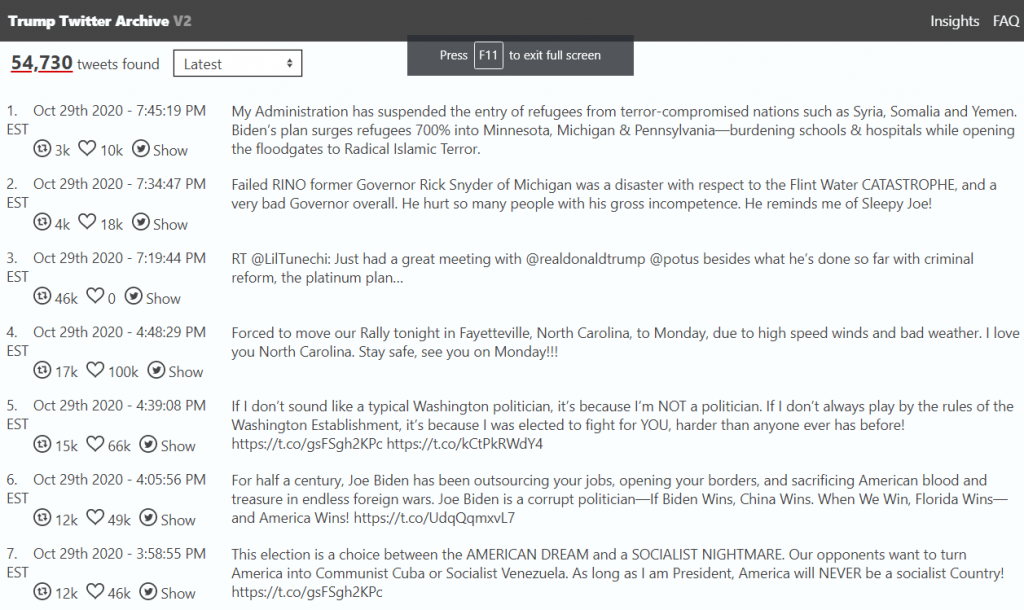
2. Cleaned up the data
The Trump tweet archive that we downloaded was very detailed and clearly needed to be cleaned up before we ran it through Text Inspector. Here’s what we did:
We removed links and hashtags
- We edited the @username to give the full name of the individual or organisation
- We made sure that all sentences ended with punctuation marks so Text Inspector could count sentences accurately. (Interestingly we didn’t have to do this very often- the majority of Trump’s tweets ended with exclamation marks or occasionally, question marks. Make of it what you will!
3. We uploaded the data to Text Inspector and clicked analyse
Once we had the raw data cleaned up, we uploaded our file to Text Inspector and clicked the ‘Analyse’ button. This took us immediately to the main analysis page where we could examine the linguistic data to find the results.
What does our analysis of Donald Trump’s tweets show?
The Text Inspector analysis provided a huge amount of information relating to the overall CEFR level of Trump’s tweets as well as individual statistics. Here’s what we found out.
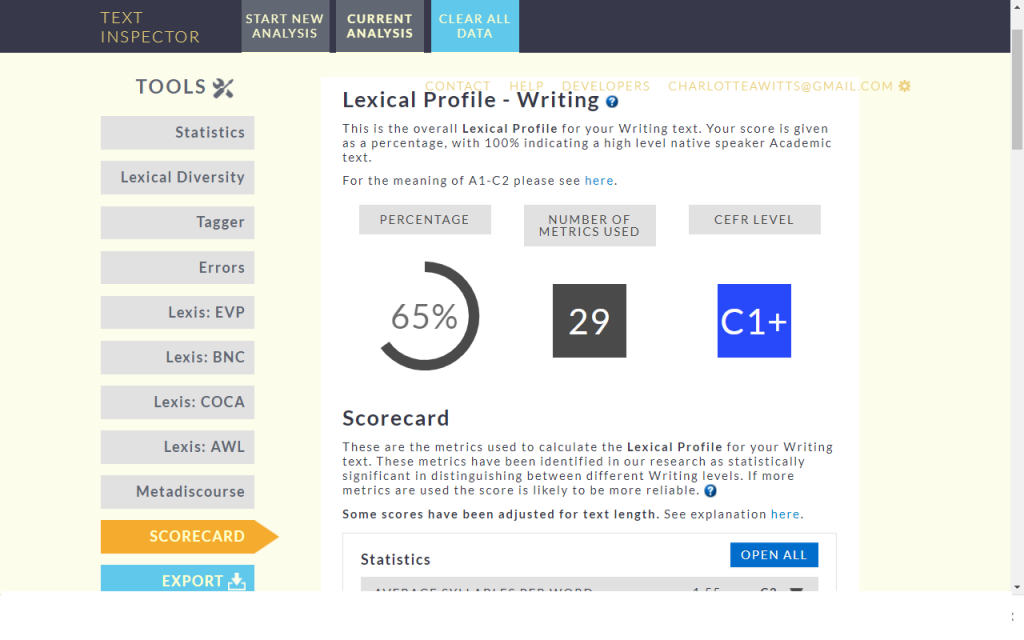
Donald Trump’s CEFR level
Based on the vocabulary used in his tweets, the analysis placed Donald Trump at a C1 level on the CEFR (Common European Framework of Reference for Languages). This is equivalent to an upper-intermediate student’s writing.
Although he scored around C2 for many metrics (as you’d expect from a native speaker of English), other metrics reduced his overall CEFR score.
A2+ (elementary level) for the number of words per sentence. This is unsurprising, given his frequent use of very short sentences such as “Obamagate”, “Law and Order” and “Fake News is the enemy of the people”.
- B1 for syllables per sentence. Again, using shorter sentences as mentioned above reduces the total syllable count per sentence. This indicates a lower complexity of language use.
- A1 for verbal elements per sentence. This indicates a low level of English usage.
Although these low scores could indicate that Trump needs to improve his vocabulary, we must bear in mind how different language use can be on microblogging platforms, especially Twitter. Shorter sentences are a common feature of Twitter.
Donald Trump’s choice of words
When we consider Trump’s vocabulary, it’s useful to consider both lexical diversity and lexical richness.
- Lexical diversity. Lexical diversity tells us how many lexical words (nouns, adjectives, verbs and adverbs) are in a text and can indicate its complexity. Trump scores low on lexical diversity because he tends to repeat the same words frequently such as ‘Fake News’ ‘Sleepy Joe’ ‘COVID’ etc.
- Lexical richness. This is a calculation that tells us how well-crafted and informative a text is. We can calculate this using something called the Token/Type ratio which simply takes the number of different words and divides it by the total number of words. We’d expect a lexically rich text to score highly, around one. The lexical richness of Donald Trump’s text stands at just 0.23.
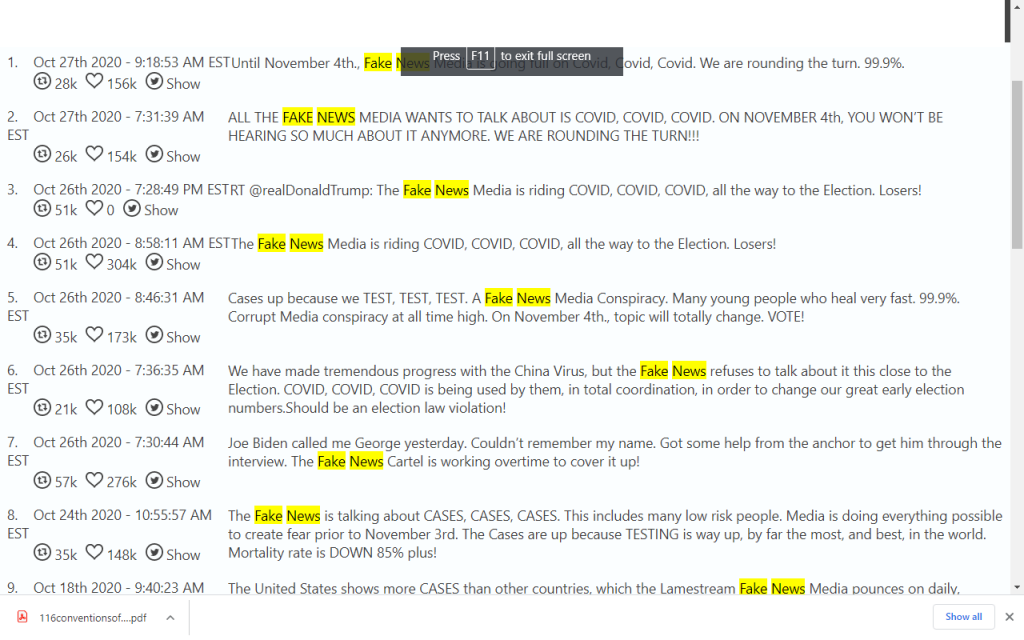
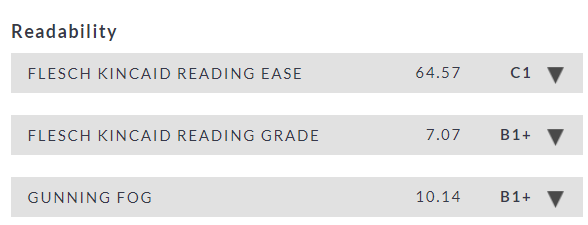
Donald Trump’s readability scores
There were no surprises when we looked at Trump’s data for readability- he scored a CEFR level of between B1 and C1 for each of the readability metrics.
The language used on Twitter is considered to be generally informal and people are more likely to use these shorter sentences, improving readability.
Donald Trump’s lexical sophistication
Text Inspector uses a combination of the Corpus of Contemporary American English (COCA), The British National Corpus (BNC), the English Vocabulary Profile (EVP) and the Academic Word List (AWL) to calculate how sophisticated the words are in a given text.
Trump scores highly in terms of lexical sophistication because he tends to use words that are of a lower frequency such as ‘endorse’, ‘transparency’, ‘disciplinary’ and ‘leaking’.
As the current President of the USA, we’d expect to see these types of political/governmental words, especially as we’re getting ever closer to the election itself.
Donald Trump’s metadiscourse markers
Metadiscourse markers are words and phrases used in a text for many reasons. They can help organise a text, show how ideas are connected, present the writer’s opinion and express a degree of certainty (among other things).
Although they’re usually used in academic texts, they can be a useful indicator of the writer’s attitude and are fascinating when it comes to Donald Trump’s tweets.
Many people have made fun of Trump’s use of personal superlatives, that is, words that suggest that he knows the most and is the best. However, it’s not just superlatives that can provide us with this information. His use of the emphatic metadiscourse markers suggests the same attitude.
As you can see from the screenshot to the right, he uses a huge number of emphatics such as ‘always’, ‘by far’, ‘definitely’, ‘obviously’, ‘never’ and ‘should’. In the context of what we already know about Trump’s use of language, this shows us that he maintains the same attitude on Twitter as in his political speeches!
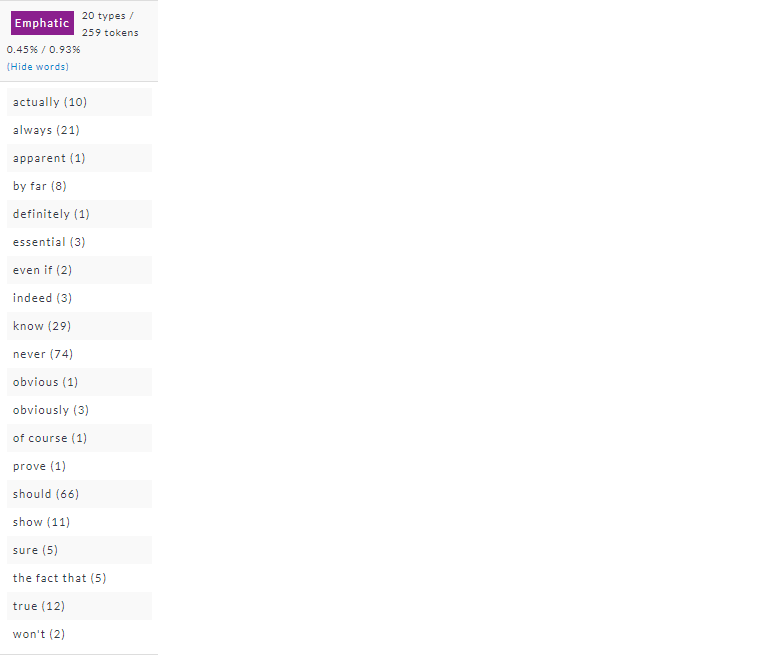
Extra comments on Trump’s use of language
When analysing the Trump tweets, we noticed that there were other interesting linguistic features that Text Inspector wouldn’t analyse but would be worth mentioning.
Trump’s overuse of capitalisation is well known. For example, he recently tweeted the following; “IF YOU WANT A MASSIVE TAX INCREASE, THE BIGGEST IN THE HISTORY OF OUR COUNTRY (AND ONE THAT WILL SHUT OUR ECONOMY AND JOBS DOWN), VOTE DEMOCRAT!!!” (5th October @ 6:30:25 AM EST)
This use of capitals is generally looked down upon and considered to be akin to shouting. However, he also uses his own unique style of capitalisation which, according to the New York Times, is used for emphasis.
However, this also has the effect of turning people and ideas into character or even caricatures. For example, ‘Crazy Bernie’, ‘Sleepy Joe’, ‘Fake News’, ‘Radical Left’, ‘The China Virus’ and so on. He doesn’t just do this once or twice but repeats these over the course of many months and years of tweets.
This use of language can be divisive, casting people into distinctive (and often oppositional) groups and increasing intolerance in the USA and even the world.
He also appears to be very dismissive and critical of anyone who disagrees with his policies, focusing more on the flaws of others as opposed to highlighting his own strengths in their own right.
Summary
As we’re sure you’ll agree, analysing Donald Trump’s use of language in his tweets was a very interesting project. Many of the features we’ve uncovered in his tweets can be explained as normal features found in microblogging and across social media platforms.
Having said that, many features do stand out. His repetitive use of language reduces his overall CEFR score, lexical diversity, lexical sophistication and lexical richness. Considered alongside the frequent use of emphatic discourse markers and unique use of capitalisation, it’s clear that Trump’s politics and personality shine just as brightly on Twitter as they do on the podium.
Have you analysed a text using Text Inspector? Curious about Boris Johnson’s tweets or Adele’s Facebook habits? Try our tool today.
Share
Related Posts

What is Readability and How Does It Work?
24 June, 2022
Readability refers to how easy it is to read and understand a text, depending on […]
Read More ->
Lexical Diversity: An Interview with Aris Xanthos
23 June, 2022
Aris Xanthos is a lecturer and researcher in Humanities Computing at the University of Lausanne, CEO […]
Read More ->
Announcing the Text Inspector/CRELLA Small Doctoral Research Grant – Steve Jones
23 June, 2022
We are delighted to announce the winner of our research scholarship award with CRELLA is Steve Jones. Steve will […]
Read More ->